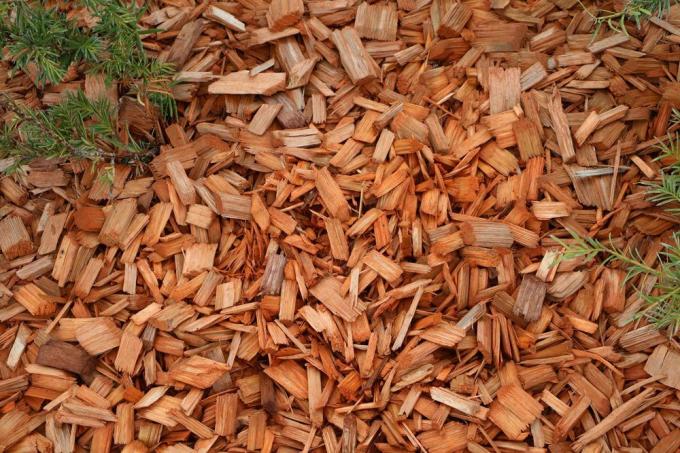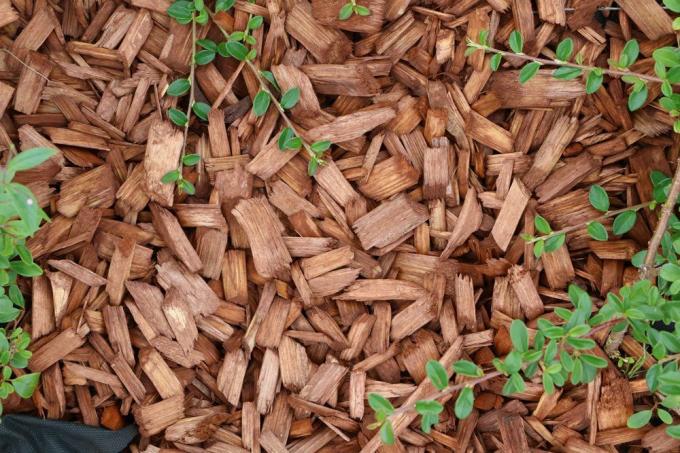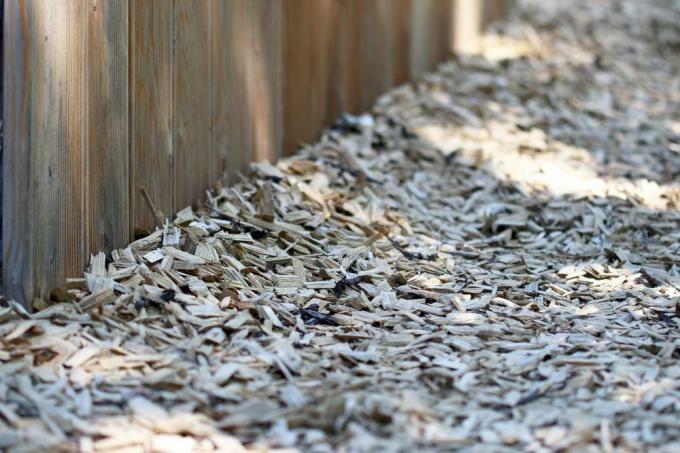
table of contents
- Mulch
- Use bark mulch correctly
- time
- Path design
Bark mulch is a real magic cure. It can actually work some small miracles in your own garden. It is not for nothing that it is often said that it would be an organic garden helper. However, the prerequisite is that you apply the mulch as you should apply it. And the when, i.e. the right time, also plays an important role. So reasons enough to take a closer look at the topic.
Mulch
Mulch is a term that appears every now and then in connection with the garden or even more frequently in agriculture. What is meant by this is always organic material that has not rotted away. This can be, for example, grass clippings, straw, sawdust or shredded pieces of bark. The application of the mulch in the garden or on a field is called mulching. Above all, it should fulfill three important tasks:
- Protective function: Mulch keeps the soil cooler for longer in summer and provides warmth in autumn
- Nutrient supply: Mulch gradually rots, turns into humus and thus a supplier of nutrients
- Weed prevention: Mulch significantly reduces the incidence of light, so that very few weeds can grow under the layer
Bark mulch consists predominantly of bark, which is mainly obtained in sawmills when a tree trunk is peeled off. This bark is roughly chopped with a chopper, but must not be ground. After chopping, it should dry for about three months before it is packaged and used. Bark mulch packs are available in different sizes from specialist gardeners, gardeners or directly from a sawmill.

tip: When buying bark mulch, you should make sure that the proportion of fresh wood in the mulch is as low as possible. This can be checked, for example, by a visual inspection.
Use bark mulch correctly
Applying bark mulch to the ground is very easy and does not require any special knowledge. A few aids that hobby gardeners usually already have are an advantage. This includes:
- wheelbarrow
- Garden shovel
- Rake
- Garden rake
- Folding rule
Typically, mulch is applied to the soil around the plants. The aim is to achieve a closed surface that is as uniform as possible and has no gaps. The thickness of the mulch layer is particularly important. It should definitely be in a range between five and seven centimeters. If the layer is thinner, it can no longer protect against weed seeds and also cannot regulate the temperature optimally. If, on the other hand, it is stronger, there is a risk that the pieces of bark will start to mold. This is the best way to go about mulching:
- Pour mulch from the sack onto a wheelbarrow
- from there spread the mulch roughly with the garden shovel
- Use a rake or rake to ensure that the surface is even
- regularly check the thickness of the layer with the folding rule
- if necessary, refill or remove material
If the entire bag is not used up with mulch, the bag should be closed tightly and stored in a dry place as possible. Then the material can still be used later. It may be a good idea to poke small holes in the sack to ensure good ventilation.
time
There is no set time when you should apply bark mulch. As a rule of thumb, it should always be applied outside of the growing season. So autumn and early spring are ideal. The question of how often it has to be mulched cannot be answered without further ado. As already mentioned, the goal should always be a closed shift. If there are gaps in this, new material can also be applied in summer to be on the safe side. Incidentally, correct use also means that the bark mulch is placed directly on the ground. Under no circumstances should it be placed on a layer of snow or ice.
Path design
One of the many advantages that bark mulch has is that it can be used to create paths very easily and very inexpensively. It is almost perfect as a covering for a wide variety of garden paths. However, it can also only be used for path delimitation. If it is used as a covering, weeds in particular can be wonderfully enclosed with it. In addition, there is no sealing of the floor. Rainwater simply flows off through the mulch layer. However, the layer usually has to be renewed at least once a year.



